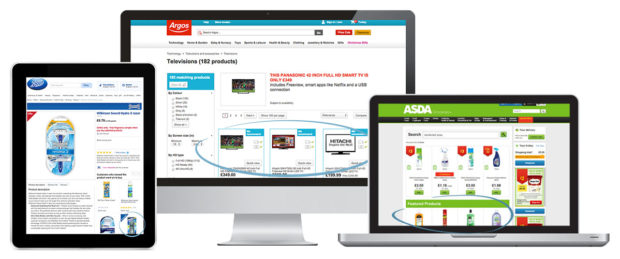Ecommerce as a Media Channel
by on 17th Sep 2015 in News

It is vital marketers are able to reach their audiences effectively in order to minimise wasted ad spend and boost conversion rates. In this piece, Ben Cooper, managing director, Europe at HookLogic (pictured) discusses how the consumer shopping journey has ceased to be predictable, which has made it difficult for brands to decipher which marketing tactics will yield the greatest results, and where and when to deploy them.
Against today's backdrop of uncertainty, brands need to identify sure-fire approaches that reach shoppers where and when they are most likely to buy, shortening the path to conversion. By utilising ecommerce as a media channel, marketers can access bottom-of-the-funnel shoppers who show high intent to purchase, streamlining their marketing campaigns and increasing ROI.
So, what are the benefits of including ecommerce in the marketing mix and how can marketers incorporate it into media planning to reach highly engaged consumers?
Targeting consumers during moments that matter
With so many consumers using so many different shopping methods, it can be difficult for brands and marketers to understand the true value of their advertising efforts. Many companies target consumers at the start of their purchasing journey with ads on social media sites and search engines, often reaching users who are not even in shopping mode; meaning the ads are unlikely to result in a direct conversion.
By targeting consumers on ecommerce sites, brands can be sure they are reaching a highly engaged audience that is very likely to make a purchase, and can lead the shopper to the product description page within the site – shortening the path to purchase without distracting the customer from their initial goal.
While top-of-the-funnel tactics are important to drive brand consideration, marketers must serve comprehensive campaigns that reach consumers across the entire conversion pathway. It is important marketers include ecommerce to complete their advertising offering and ensure consumers choose their product over a competitor’s at the point of sale.
Targeting consumers in context
Two-thirds of consumers start their product searches on retail sites rather than search engines and the use of tools such as HookLogic’s Retail Search Exchange – which allows brands to place their products in prominent positions in retail site search results – is empowering these brands to take control of their product’s placement on a network of retail sites.
By placing native advertising within ecommerce sites, brands can ensure their product is placed in a prominent location, without negatively affecting the consumer’s shopping experience or disrupting them from their original course of action. By appearing within the context of the website, and acting like any other search result listing, these ads become useful to the customer, rather than a nuisance, and increase chances of conversion by directing high-intent users to the point of sale.
To make the most of these tools, brands are able to place ads for items related to the consumer’s search terms within the results – for example, serving beer product listings in search results for sausages – to promote additional purchases. This gives brands the opportunity to replicate the in-store experience where consumers are more likely to pick up extra impulse purchases on their journey to the checkout. In fact, 68% of offline purchases are made on impulse while the customer is in store. This is a key opportunity for retailers, who struggle to encourage unplanned sales online as consumers are able to navigate directly to the product they are looking for, bypassing any additional purchasing opportunities.
Monitoring interactions to improve insight
By incorporating ecommerce into media plans, brands are able to gain improved insights into consumers’ buying and browsing habits and close the loop on sales performance. Ecommerce advertising provides a shorter pathway to conversion, making it easier for brands to monitor each touchpoint on the journey to purchase to better understand consumer needs.
For example, if a consumer searches Google for a lipstick and L’Oreal is buying traditional cost-per-click (CPC)-based advertising, the user will be directed to the brand’s website to learn more about the product, before being linked to the Boots site to make the purchase. This presents a problem for brand marketers who must understand the value of each of these touchpoints, and may not even learn about the sale at the end of the journey. The shopper may then choose to continue searching numerous retail sites to find the best price, adding an even greater number of touchpoints for marketers to identify and analyse.
The consumer path to purchase is continuing to shift and change, and more and more connected devices are coming to the market, empowering consumers to choose a route to conversion that is often fragmented and unpredictable. To remain competitive, brands need to place themselves in front of consumers they know are likely to make a purchase to ensure ad spend is not wasted. As consumers become increasingly savvy to marketer’s efforts to sell, it is vital advertisers embrace native formats within ecommerce sites that are as useful to the consumer as the brand, and shorten the path to purchase to increase chances of conversion.
attributionCross-ChannelDigital MarketingPerformanceTargeting









Follow ExchangeWire